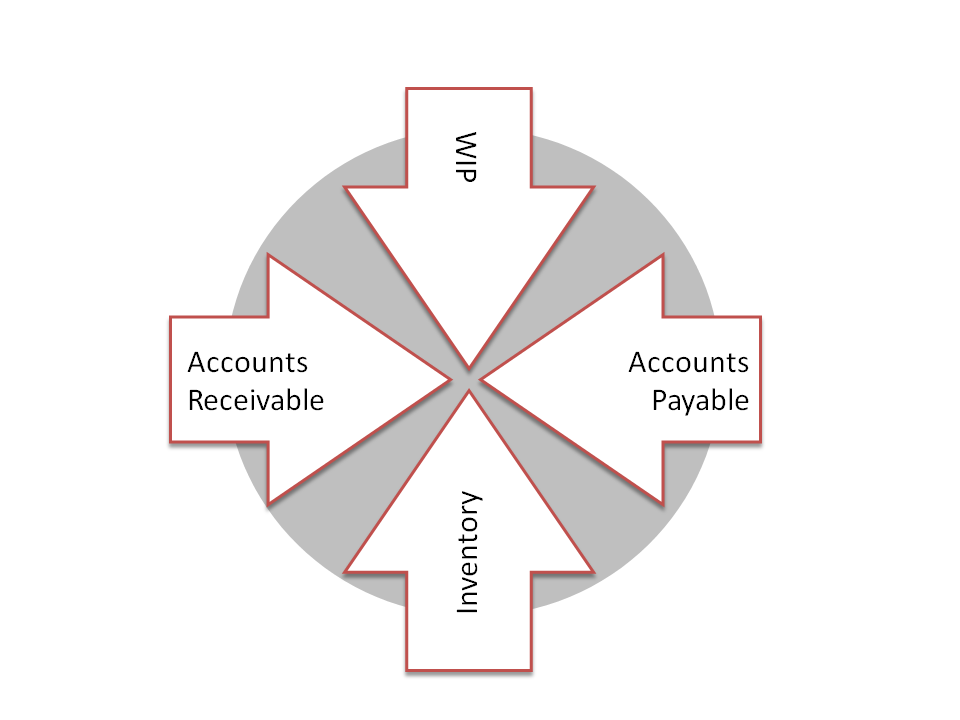The credit crunch forced businesses to look for new ways to access funding for their business. Enter procurement – the organisations new banker!
Most people are worse off since the global credit crisis. There is one notable exception however. That is procurement! Procurement has become the new organisational banker. Its role has expanded beyond generating savings to freeing up cash and in particular freeing up working capital.
The Leehman Brothers collapse sent shock waves around the world – it was the financial equivalent of Pearl Harbour. Credit dried up leaving organizations big and small and even some governments scrambling for cash. Liquidity became a business priority.
Why Liquidity Matters
CFOs know that a severe liquidity crisis can bring an otherwise successful business to its knees.
An organization can be profitable with an impressive list of assets on its balance sheet, but strangled of cash and there fore unable to pay its daily bills as they fall due. So, when bankers stopped lending cash CFOs get nervous.
Seeking A New Banker
Faced with a servere credit crunch CFOs had to turn elsewhere. They had to discover new sources of funding day to day operations, as well as strategic investment projects and programmes. But if the banks were not going to provide the funds required, who would?
The answer was not Wall Street or the some new form of financial instrument, it turned out to be the procurement / supply chain management team! They offered CFOs the prospect of freeing up significant amounts of the working capital tied up in the organisation.
How Procurement Funds The Organisation
Procurement can pump operating liquidity back into the business – providing the funds required to grow. That is interest free cash that can be put to work either meeting short term liquidity requirements, or funding strategic projects.
The Financial Times defines Working Capital as: ‘The amount of cash and other liquid assets a company holds in order to finance its day-to-day operations – effectively, the excess of current assets over current liabilities.’
Procurement has the potential to release as much as 30% of the working capital tied up in the organisation. It can generate improvements in the four principle components of the working capital equation.

The 4 ways procurement can release money tied up in working capital are examined below:
1. Raw Materials and Work In Progress.
Procurement can reduce the money tied up in raw materials and unfinished goods/projects, by:
– Orchestrating the supply chain to ensure more WIP is held by suppliers
– Consolidation of SKUs and suppliers (fewer varieties held generally means lower stock levels).
– Value re-engineering – changing the component and raw material composition of products/services
– Protecting against raw material market fluctuations
– Partnering with strategic partners to innovate and improve processes.
2. Inventory – the money tied up in stock.
Obviously procurement has a key role to play here, including:
– Seeking to minimize the buffer to stock being held
– Improving the speed of supply chain responsiveness to demand fluctuations
– Improved risk management of suppliers
– Moving to vendor managed inventories
3. Accounts Payable
Procurement can impact not just on the amounts, but the timing, of monies due to suppliers and other creditors (including repayments), for example by:
– Negotiating better supplier prices
– Re-negotiating extended payment terms
– Implementing framework agreements
– Demand management, where controls and other methods are put in place so as to curtail demand at source.
4. Accounts Receivable
Procurement can speed up the cash cycle, impacting on the monies that are due, or likely to fall due from customers. Some simple examples include:
– Speedier, more accurate order deliveries generally means speedier payment
– Ensuring quality levels to prevent disputes about payment
– More accurate invoicing means more prompt collection
– Factoring and other means.
Procurement’s Impact On Economic Profit
By impacting on working capital procurement can improve operational efficiency and overall business health. That is because working capital indicates the company’s underlying operational efficiency. It is another way in which it can deliver superior business performance.
It is hard to talk about procurement’s impact on business performance without addressing the issue of ROCE or ROI. Working capital is just one way in which it contributes to this primary ratio for the CEO.
The amount of money tied up in working capital as well as in other assets determines the level of economic profit of the the business. Quite simply, if business A generates 5 million in profit, but has assets of 100 million, and business B returns the same profit but with assets of 50 million, then B is twice as attractive an investment as A. In another article we will take this idea further to examine the ways in which procurement and supply chain management can positively impact on the balance sheet.
Implications For Sellers
Sellers need to be aware that procurement is increasing being measured in terms of its impact on working capital. The methods at its disposal have implications for suppliers. However they can be seen as an opportunity, as well as a threat.
When you are putting your next proposal together examine creative ways in which you can help buyer address his, or her working capital needs, under the 4 headings above.



